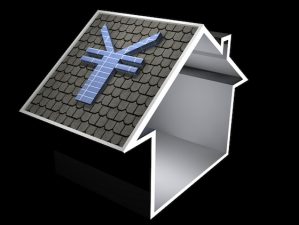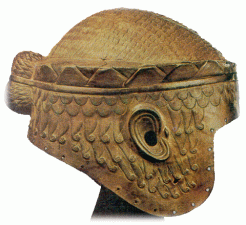What if no one had ever witnessed the beauty of a dark night sky? The ancient light of distant stars inspired Middle Eastern art, mythology and science. While Medieval European leaders shunned astronomical observances which challenged our place in the universe, Middle Eastern civilizations embraced the night sky. It told them when they should plant, when they should harvest and when they should pray. It was nature’s calendar and clock.
When the ancient Egyptians saw Sirius rise with the sun, they knew the Nile would soon overflow its banks at Memphis. Egyptian builders aligned the great pyramids at Giza with the three bright stars in Orion’s belt.
Aldebaran, Algor, Altair, Betelgeuse, Mizar and many more of the brightest stars in the sky bear Arabic names. The stars tested our vision and gave us something to strive for.
 Here you see the same winter constellations, this time the lights of Dubai blot out all but the brightest stars. The same constellations as those seen in Wadi Rum. Only the moon and a few stars are visible over Dubai’s glare.
Here you see the same winter constellations, this time the lights of Dubai blot out all but the brightest stars. The same constellations as those seen in Wadi Rum. Only the moon and a few stars are visible over Dubai’s glare.
But even as our civilization reaches for the stars, we are becoming increasingly detached from the night sky. International organizations are considering whether to disconnect human time from the stars. Christian Easter, Jewish Passover and the Muslim calendar maintain alignment with the phases of the moon, but will it soon be impossible to see the new moon in the glare of cities such as Dubai, which some astronomers consider to be the most light-polluted city on earth?
See NASA’s light pollution of the Middle East:
This video above taken from the International Space Station shows the extent of the light pollution problem across the Middle East.
All of the lights in this video represent wasted energy. Millions of barrels of oil are burned to generate electricity to power lights whose energy escapes into outer space. In a bold attempt to glorify ourselves and our cities, we’re washing out the gift of the night sky. Human insecurity also contributes to light pollution. This ranges from misdirected home security lights to India’s terrible plan to illuminate 1248 miles of the India-Pakistan border with floodlights.
The first step in in solving the problem of light pollution in the Middle East is to recognize that it is a problem. Dubai’s Environmental Protection and Safety Section released a report indicating that light pollution is a problem.
Imagine if One Thousand and One Arabian Nights had ended on the third page with King Shahryar telling Scheherazade:
“The sun has risen. I must fulfill my oath and execute my wife before she betrays me.”
And Schedherazade replies with her final words, “But master, that is not the sunrise. It is merely the lights of a new shopping center.”





I’ve just spent 11 days in Oman and some also basic villages which didn’t have a
Lot of light pollution. The night sky still only had one or two stars which I put down to sand in the atmosphere
Thanks for your comment. Yes the dust was still settling from a storm when we were in Wadi Rum. But we could also see the lights of Eilat and Aqaba were also very obvious on the Horizon.
It wasn’t until I made friends with young people who had grown up on farms that I realized that the sky actually looks like that picture up there. I’ve been to the Negev and the desert of New Mexico, and still haven’t seen a sky that full of stars. It’s sad that we’re loosing it. I’m really disturbed by light pollution. We need light, but not as much as we produce… it’s just getting ridiculous.
Lincon,
Thank you for your comment. I agree that outdoor lighting is misused for tasteless decoration and counterproductive security measures. I intend to write more on this topic because it is an environmental problem which can be solved immediately with existing technology and awareness but with inexpensive LASERS, HID lights and LEDs, the problem could become much worse if we don’t get a handle on it now.
As I said, the first step is recognizing that it is a problem. Most people born in medium or large city in the past two generations have never seen more than a handful of stars. They have no idea what they are missing. I’d like to raise awareness of this problem before there is no one left who understands that night serves an important purpose in nature as well in our psychological well-being.
I confirm that light pollution is a serious problem in the Middle East. Dubai is probably the worst example, but most other cities are not far behind. Most of the problem comes from irresponsible street and security lighting. What is very disturbing is the extensive abuse of vanity lighting. This is lighting simply for the sake of lighting, and does not serve any useful purpose. This includes floodlit buildings, skybeams used to promote commercial enterprises, lasers and illuminated monuments. All of this is an abuse of energy and fuel that is a major contributor to climate change. The ecological damage caused by street and other forms of night-time lighting is now well established. It also affects circadian rhythms in humans, thereby affecting human health. Of course, the judicious application of lighting is beneficial if we are to function well at night. However, in view of what we now know, lighting should only be applied sparingly, on a needs must basis, where needed, when needed, and in the correct amounts using appropriate 45 degree full cut-off technology. So, the less of it we have the better, with concomitant savings in energy that will reduce greenhouse emissions. This can be achieved through motion operated lighting and lighting curfews, especially in residential areas. Any financial savings should be redeployed in essential services that really matter, such as health, education, and welfare. In order to make these savings we need to dispel these urban myths that more and brighter lighting = greater safety and security. Most crime of the kind we fear occurs in daylight, ergo criminals need light. Criminality drops almost to zero during power failures. Road safety can be maintained without the naive recourse to street lighting through the application of speed limits at night, reflective paints and lane markers, cats’s eyes, and baffles on central reservations to reduce the glare of oncoming traffic. In addition, though it may be a truism, vehicles have headlights. The only people to benefit from all this lighting are the lighting companies and municipal lighting departments who exploit and perpetuate these fears in order to maximise profits and safeguard their own jobs.